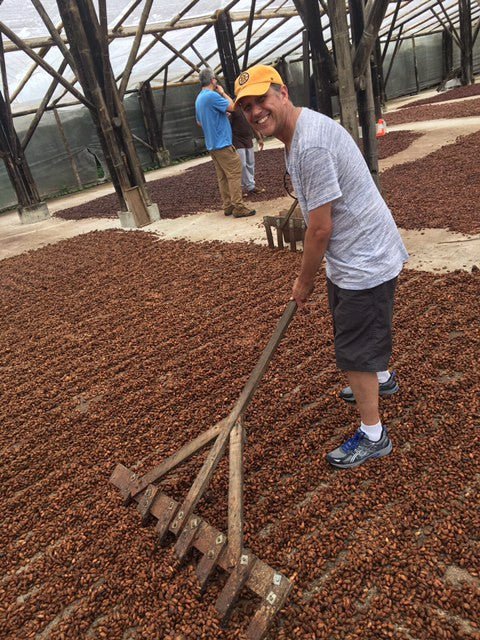1-800-625-0595

Connecting With The Cocoa: Tim's Journey to Ecuador
A few months ago I was invited to visit one of our primary chocolate supplier's production facility located in the capital city of Quito, Ecuador. Little did I know what else Republica De Cacao had in store for the group of bakers, chocolatiers and pastry chefs from all walks of life and business. I was lucky enough to be on a similar trip with Republica’s parent company, Valrhona to the Dominican Republic a while back so I was familiar with adventures like this. But, I was mistaken as this trip had a real “boots on the ground” feeling to it. While I felt the Valrhona trip was very informative, it was pretty posh. Republica’s trip had all the basic comforts covered but the intimate interactions with the producers, farmers and growers assembled was the most memorable part and really connected me with chocolate to a deeper level.
This trip stretched from the beautiful South American coast all the way to base of the Andes Mountains in just four days. It was precisely planned to fit in as much as possible to really give us a look at what it takes to make chocolate to Republica’s high and delicious standards. Experiencing first hand the raw ingredients, the rigorous production techniques, and the people that truly make it happen along the way was an amazing experience.


This small facility feels like a buzzing hub and is literally the entire area's livelihood. About 20 farmers, some on bikes and some on horses brought their own milk to be measured and pasteurized right there on the spot. The end product is eventually turned to powder later and taken to Quito for production. Plus, getting to taste it on site an added bonus, but then a funny thing happened, as we were happily sampling away we had a realization. A particular flavor stood out, though not dominating, it was there. It was grass. These cows graze only on a specific grass in this area, call them picky but this subtle yet very distinct flavor was delicious. I admit, I normally am a skeptic with this kind of stuff but this specific grass note was as clear as day, so much so, I haven’t been able to eat that particular chocolate without noticing it since. As we were leaving something else unexpected happened. The fog cleared and right there in front of us Cayembe came into view. This towering mountain ranks as Ecuador's third highest and a not-so active volcano to boot. And the good news kept coming, it has not erupted since March 1786, time was indeed on our side. None of us had any idea that there was a majestic snow-capped volcano in the distance the whole time. I mean right there! It was one of those moments that as a traveler, you just simply do not forget.

There was so much to see and take in but two main highlights rise from the rest. One, we got to see how pressed sugarcane juice is crystallized and its end product is what we use on an everyday basis here in the states. I will never forget that sweet smell of caramelizing sugar, which I was reminded several days later when putting on the jacket I wore that morning. And two, we enjoyed a wonderfully refreshing drink made with freshly squeezed sugarcane, lime and a house-made moonshine also made from sugarcane. A much-needed respite from the heat of the day. This will be a drink I will try to recreate eternally.
Back to Quito, our trip wrapped up with a tour of the chocolate making process at Republica, which was impressive to say the least. Although we are detailed and take time to make our own Gearharts confections, I was amazed at Republica's level of care taken during each step of production. From the sorting, roasting, conching to tempering the chocolate, each process was masterfully executed and creates an incredibly high standard. This part of the trip was also a personal highlight for me as Republica's chocolatiers had been hard at work on creating a custom blend just for Gearharts and this was the unveiling! The samples of this blend did not disappoint and was the kind of stuff we could only dream of 10 years ago, but now dreams are reality and here I was, being able to witness the raw journey of our chocolate and also being able to have a say in an integral ingredient of our quality confections. Our standard high quality was a core belief from when we started 16 years ago and this high standard has separated us from the pack and still rings true today.
I am excited to have seen how this amazing chocolate is produced and thrilled to work with more of this top-quality chocolate going forward. I hope you love it as much we do (we certainly think you will) and enjoyed this glimpse into the world that makes it all possible!




Leave a comment